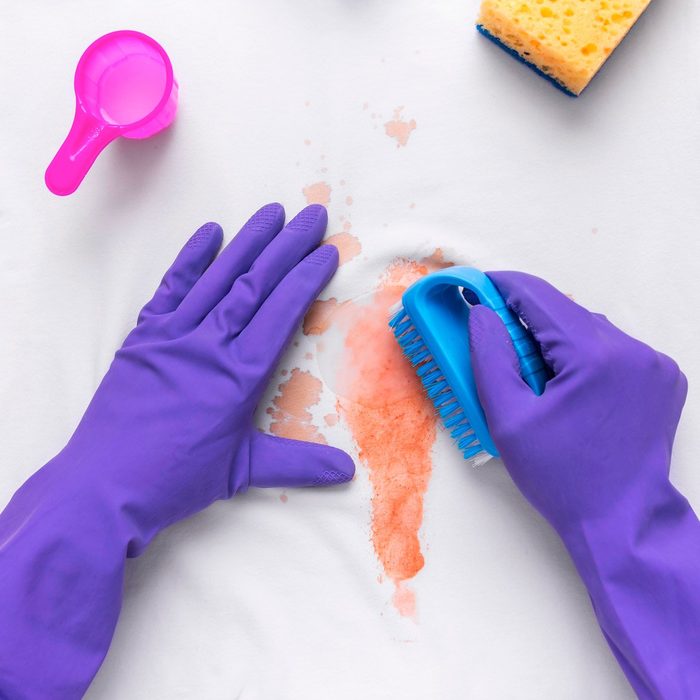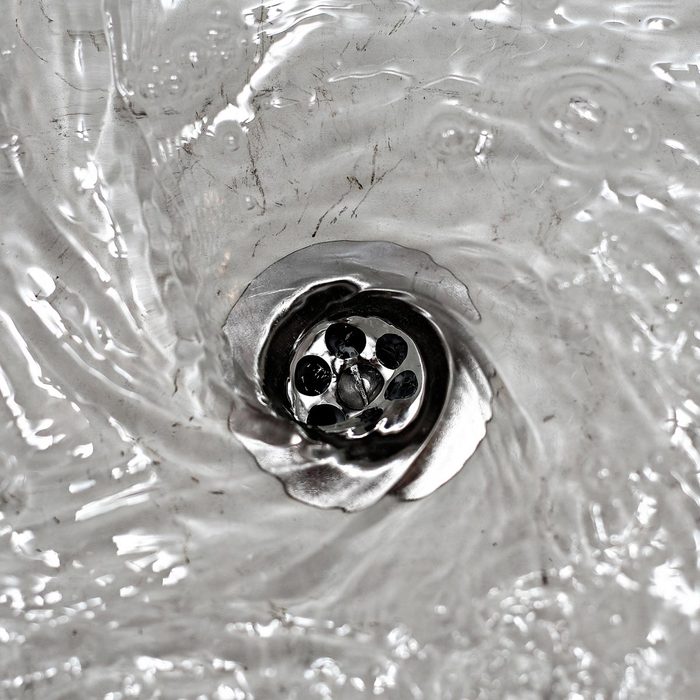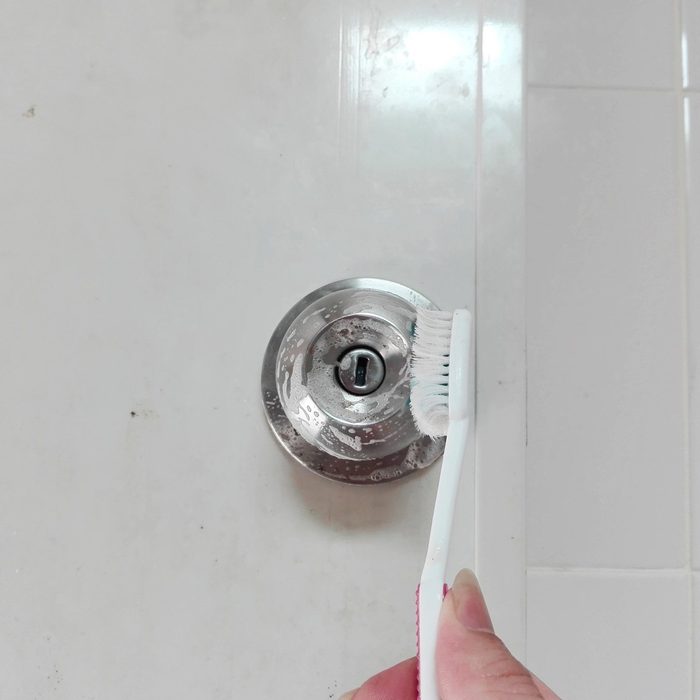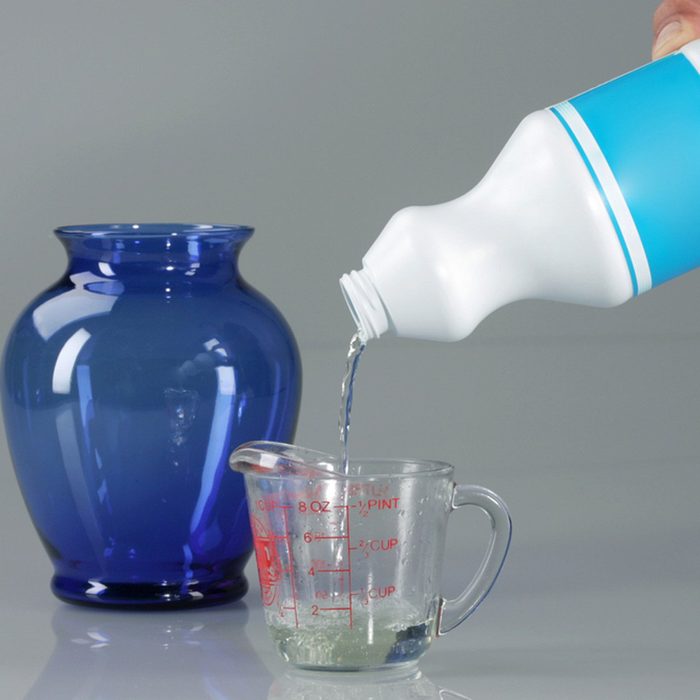
Mixing Bleach with Other Cleaners
It may seem like it would only help the fight against bacteria and germs, but mixing bleach with other cleaners can cause serious problems. The Association of Residential Cleaning Services, International (ARCSI) says bleach should never be mixed with the following:
• Vinegar: When bleach and vinegar are mixed together, the combination creates chlorine gas which can cause eye irritation and breathing problems.
• Ammonia: Bleach mixed with ammonia creates chloramine, a gas which is similar to chlorine gas. Additional symptoms from exposure to chloramine are shortness of breath and chest pain.
• Pine-Sol: If you mix bleach and Pine-Sol in large amounts, it will create chlorine gas.
Check out these 20 household cleaning products you should never mix.

Using Too Much Bleach in the Laundry
Bleach can fight stains and whiten your whites, but there is such a thing as too much bleach when it comes to doing your laundry. When you over-bleach your laundry, it can impact the strength and quality of the fibers over time. The American Cleaning Institute (ACI) offers these tips for using bleach in your laundry:
• Read the care label as some fabrics cannot be bleached. Also, some detergents have color-safe bleach or bleach alternatives built in. However, these products do not disinfect.
• Do a test. Dip a cotton swab in the bleach/water solution and dab on an inside seem. If the color remains, you should be safe.
• Start small by laying a stained section of the clothing article flat and be sure there are not layers of fabric or anything underneath that can be affected by bleach. Work from the outer edge of the stain and rinse with water when the stain is gone.
• When bleaching a whole load of laundry, read the label on the bleach container to determine the amount to use. You should also consult your washing machine manual to see if you should add bleach to the drum or to a special dispenser.

Dumping Bleach Down Drains
If your home has a septic system, you shouldn’t pour any type of bleach down the toilet or drains. According to Rapid First Plumbing, a residential plumbing company in California, bleach kills the beneficial bacteria that helps break down your home’s septic waste. “Without the breakdown of solids in your septic tank, your waste system may clog or fail to drain in your yard properly. You may permanently damage your septic system,” the company notes on its website. In addition, bleach can mix with other agents in your sink drains and contaminate the air in your home and even cause your pipes to burst.

Using Bleach on Metal Surfaces
Bleach shouldn’t be applied to copper or stainless steel appliances. That’s because the corrosive chemicals in bleach can react with metal and leave behind stains and even corrosion, according to ARCSI. “Always use approved cleaners on metal surfaces. Also, never use bleach or ammonia to eliminate rust. This will set the stain and make it more difficult to remove,” the ARCSI warns.
Clean your house right with these 17 secret cleaning tips from the pros.

Not Diluting Bleach Enough
More bleach doesn’t mean a better clean. ACI notes the only advantage to using more bleach than prescribed is if the surface is soiled. When using bleach to clean floors, sinks, appliances, certain dishes and countertops, ACI says, “Do not use more than one cup of bleach per gallon of water.”
These 10 cleaning mistakes are actually making your home dirtier.